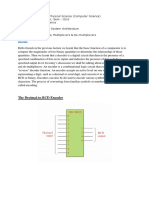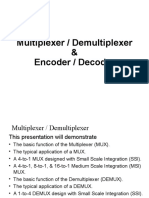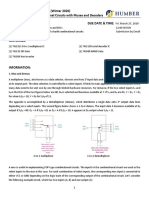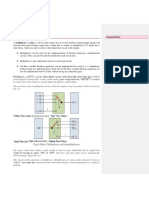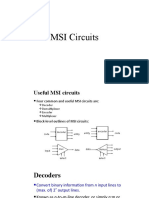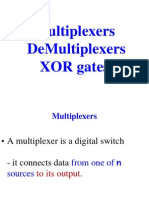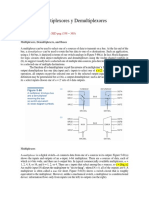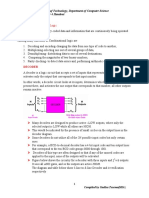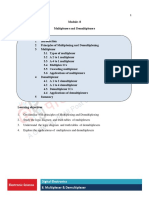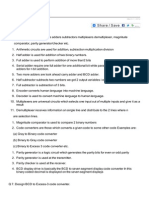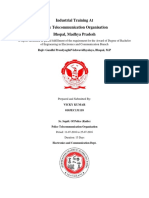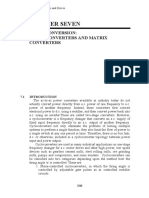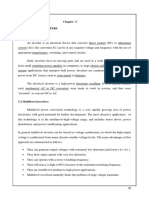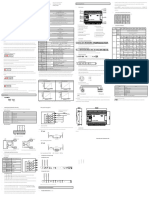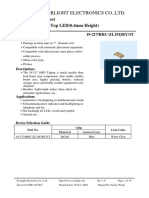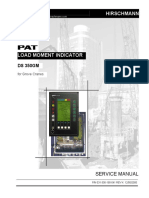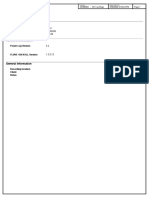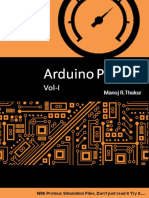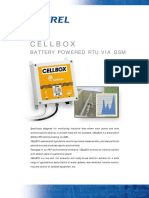0% found this document useful (0 votes)
62 views10 pages4) Mux - Demux - Encoder - Decoder
The document discusses digital circuits, categorizing them into combinational and sequential logic circuits, with a focus on multiplexers, demultiplexers, encoders, and decoders. It explains how multiplexers select one of many inputs to output based on control signals, while demultiplexers perform the reverse function by directing a single input to multiple outputs. Additionally, it covers the operation of encoders that convert active inputs into coded outputs and decoders that translate coded inputs into specific outputs.
Uploaded by
hannureazim1Copyright
© © All Rights Reserved
We take content rights seriously. If you suspect this is your content, claim it here.
Available Formats
Download as PDF, TXT or read online on Scribd
0% found this document useful (0 votes)
62 views10 pages4) Mux - Demux - Encoder - Decoder
The document discusses digital circuits, categorizing them into combinational and sequential logic circuits, with a focus on multiplexers, demultiplexers, encoders, and decoders. It explains how multiplexers select one of many inputs to output based on control signals, while demultiplexers perform the reverse function by directing a single input to multiple outputs. Additionally, it covers the operation of encoders that convert active inputs into coded outputs and decoders that translate coded inputs into specific outputs.
Uploaded by
hannureazim1Copyright
© © All Rights Reserved
We take content rights seriously. If you suspect this is your content, claim it here.
Available Formats
Download as PDF, TXT or read online on Scribd
/ 10



